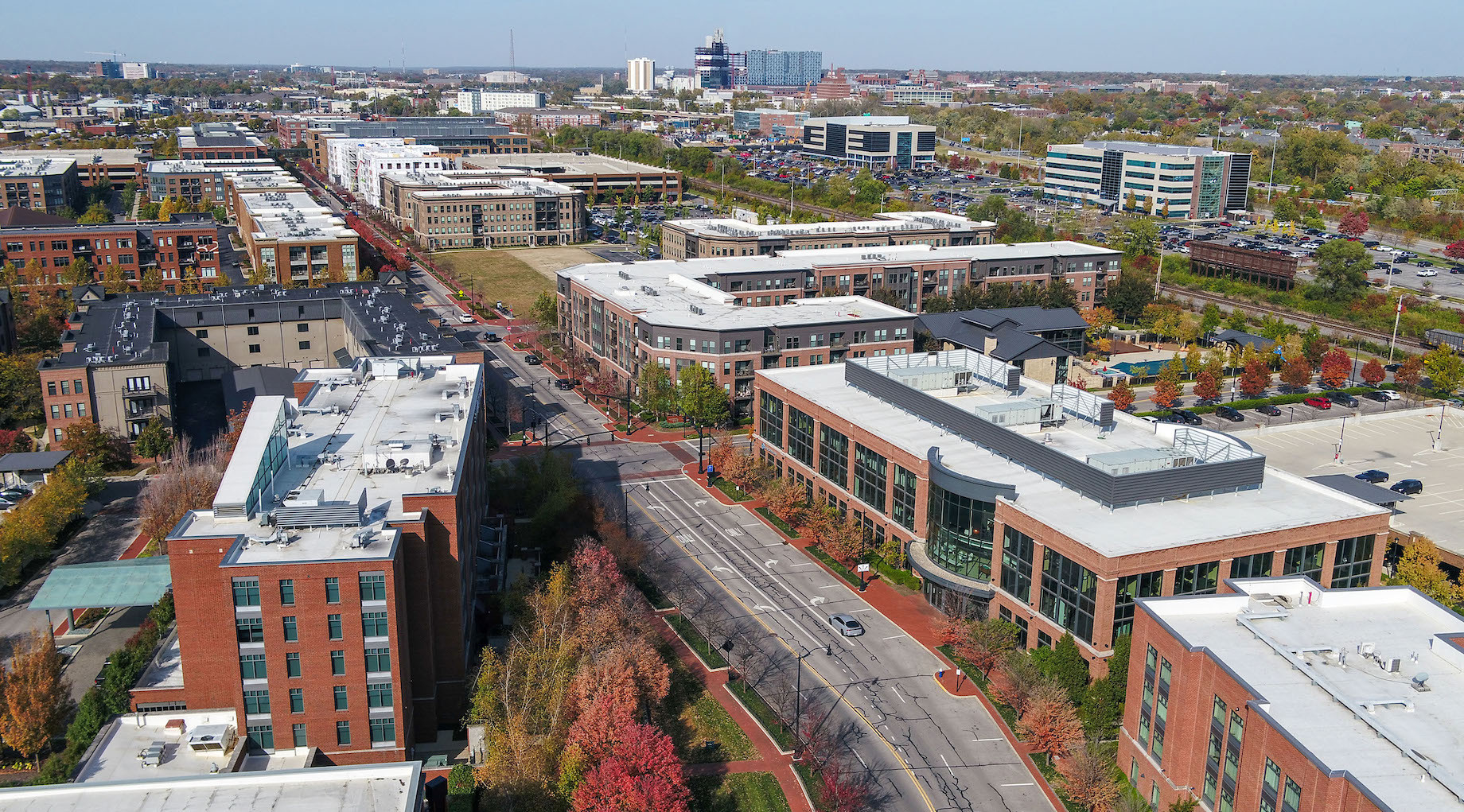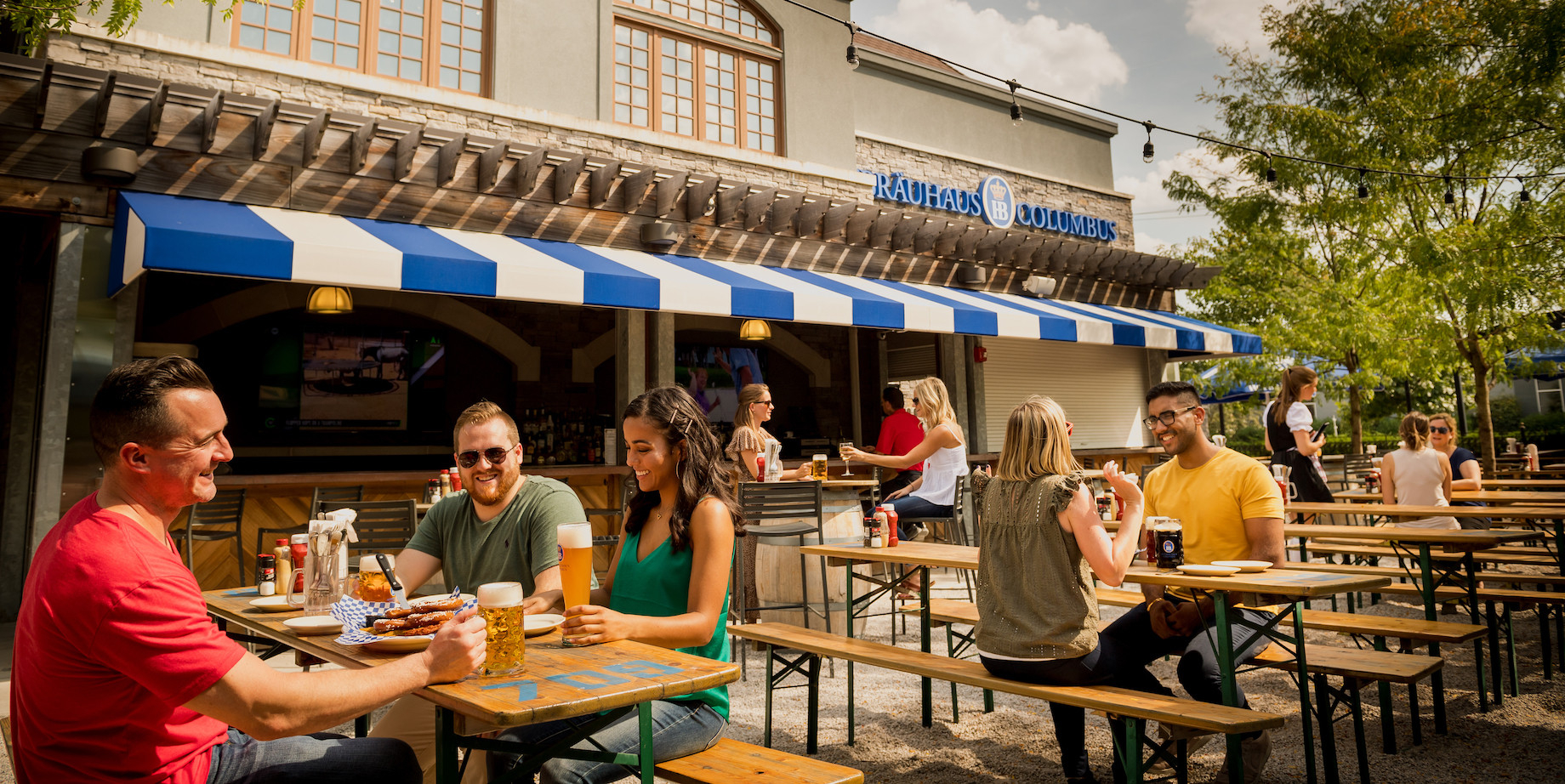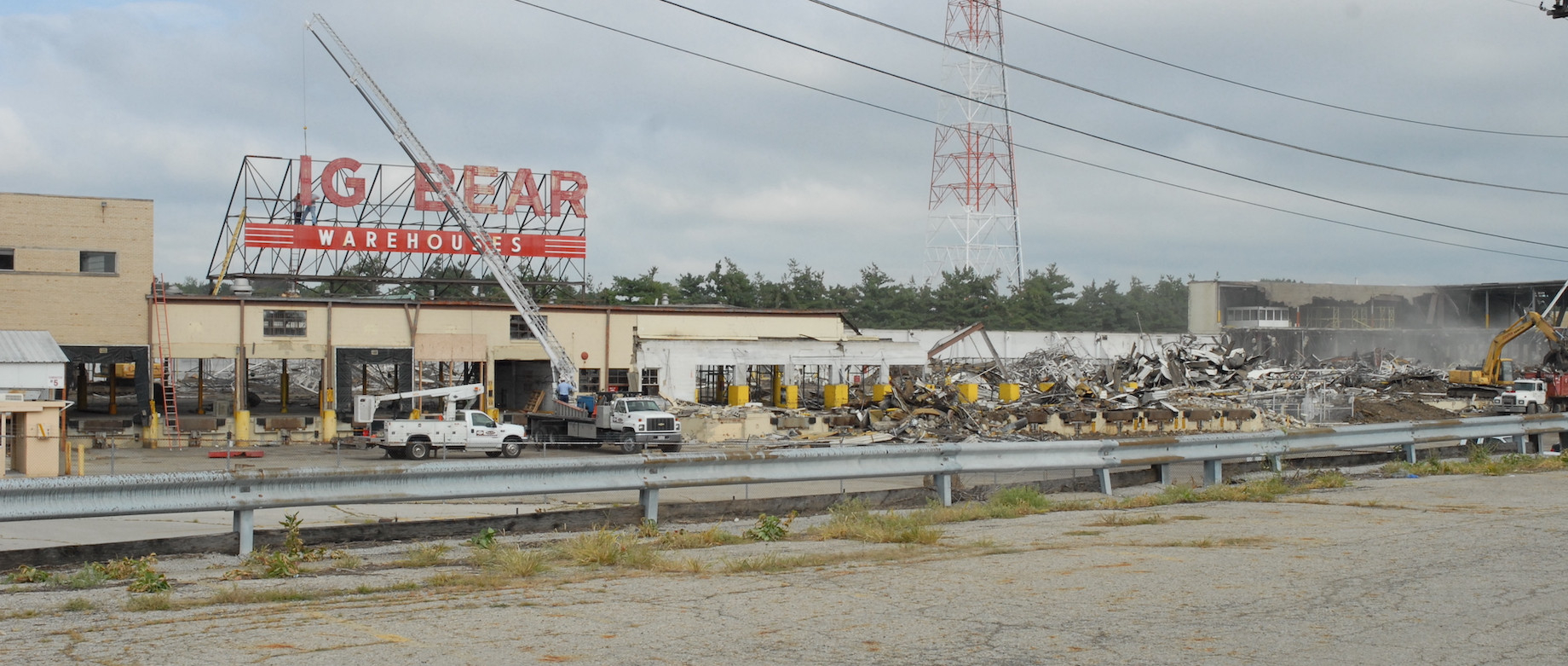Early this century, Nationwide Realty Investors was in the process of adding housing, entertainment, retail and offices to its 75-acre mixed-use development in downtown Columbus, Ohio. The project was anchored by the $150 million, 20,000-seat Nationwide Arena for the NHL’s Blue Jackets and hence was dubbed the Arena District. It was a major game changer for downtown Columbus, but Nationwide Realty already had spotted its next large-scale, long-term, mixed-use neighborhood opportunity a couple miles up the road.
ALSO CHECK OUT: New Sports Venues and the Master-Planned Districts Growing Around Them
Like the $2 billion Arena District project, which was constructed on the grounds of the shuttered Ohio State Penitentiary and bridged a gap between Columbus’ downtown core and nearby emerging neighborhoods, this next venture would rehabilitate a blighted industrial district. Grandview Heights had been best known best for its former warehouses for Big Bear stores. After assembling most of the 125 acres, Nationwide Realty broke ground in 2009. By late 2010, it had completed a hotel, office building and fitness facility.

Today, the $1 billion Grandview Yard boasts 1.4 million square feet of commercial space, of which about 220,000 is retail, restaurants and medical. It also includes 1,500 residences, two hotels and an event center. Nationwide Realty plans to add an additional 100,000 square feet of commercial space and about 500 more residences as the market dictates, said Brian Ellis, president and COO of Nationwide Realty, which has a roughly $2.5 billion real estate investment portfolio. The project has also been certified LEED for Neighborhood Development, a designation that recognizes and encourages the development of healthy neighborhoods that meet the highest standards of smart growth and new urbanism.

Despite the economic turmoil of the Great Recession when Nationwide Realty broke ground on Grandview Yard, the development was well-timed. Supply chains were operating normally and construction prices were attractive, for example. What’s more, Nationwide Realty had a clarity of purpose and the resources it needed; it didn’t need to wait for bankers or other financiers to buy into the plan, said Ellis, who joined Nationwide Realty in 1997. “We had the confidence in our vision and in the investment potential of this property. We had been developing the Arena District for a decade, and we knew the market and how it was likely to react to what we were going to do at Grandview Yard.”
Foundation for Growth
As a result of the project, the 1.3-square-mile Grandview Heights has seen its population grow by nearly 25% to some 8,300 residents over the past few years, said Mayor Greta Kearns. Grandview Heights worked with Nationwide Realty to integrate the mixed-use district with the older, single-family residential area of the city. Keys were building signature streets and incorporating a step-down design to transition from Grandview Yard’s multistory buildings to the existing homes, she pointed out. The project received some $172 million in public funds through tax increment financing and other state and city programs to perform environmental remediation and build infrastructure.
“Our city is only 700 acres, so this development represents a large portion of our land, which was previously designed to be for loud and smelly industrial uses,” she said. “Everybody wants mixed-use now, but we didn’t really anticipate how much it would allow us to diversify our residential base and provide the type of amenities that create a destination.”
“Everybody wants mixed-use now, but we didn’t really anticipate how much it would allow us to diversify our residential base and provide the type of amenities that create a destination.”
Grandview Yard offers apartments, single-family homes and condominiums. Retail includes the Market District, anchored by grocer Giant Eagle. Restaurant, medical, fitness, beauty and education operators are also spread throughout the project. Nationwide Realty initially considered a much larger retail component with some big boxes that could be tailored to fit the quasi-urban setting, Ellis said. But growing e-commerce sales at the time created a challenging and volatile retail atmosphere. “Retailers saw the density of population around Grandview Yard and we had lots of conversations with them,” he explained, “but at the end of the day, we couldn’t quite get comfortable because retailers would not make long-term commitments. That didn’t necessarily align with our long-term planning.”

Ultimately, Nationwide Realty pivoted from retail to additional office space, and the developer’s parent company, Nationwide Insurance, committed to occupying more than 700,000 square feet in a complex in the center of the project. Nationwide Insurance is now reducing its space needs, however, and Nationwide Realty is marketing it to other parties. “Nationwide’s decision to occupy space at Grandview Yard was the breakthrough that gave us the momentum to put the rest of the pieces together,” Ellis said. “Although they’re downsizing, interest level in the office space is very strong because of the urban nature of the project.”
Neighborhood Sustainability
Grandview Yard earned its official LEED-ND certification in 2022 — it had been pre-certified in 2013 — making it the largest project in the U.S. and the first in Ohio to receive the designation. LEED-ND — a collaboration among the U.S. Green Building Council, Congress for the New Urbanism and NRDC — was developed to inspire and help create more sustainable and well-connected neighborhoods as an antidote to sprawl.
Grandview Yard earned the certification thanks to green building infrastructure, energy efficiency, sustainable site development of an infill neighborhood, access to public space, five individual LEED-certified office and mixed-use buildings and walkable, tree-lined streets, among other elements.
Post-World War II warehouses had filled the site when Nationwide Realty began acquiring properties for the project, and the developer salvaged or recycled 80% of those structures, Ellis said. It reused 60% of the recycled materials, primarily as concrete placed under the streets, parking lots and building foundations. More than 1.2 million square feet of sand, gravel and crushed asphalt was reused to support parking, and machinery and reclaimed steel was sold or scrapped for recycling, as were plastics and copper wiring.

“Grandview Yard started as a decision to do an urban infill project on a contaminated and blighted site, and doing those kinds of projects in and of themselves tends to be sustainable and environmentally conscious,” Ellis said. “Over the last 10 years, Grandview Yard has become a point of pride for people who live there, as well as for the businesses that have located there.”
By Joe Gose
Contributor, Commerce + Communities Today